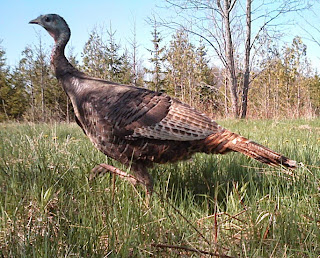Priced at roughly a hundred bucks apiece they’re an inexpensive and inexhaustible source of entertainment. Scout
a game trail, place a camera with a fresh SD card and batteries, go
away for a week and come back to swap-out the memory card and check to
see who’s been visiting. These silent sentinels patiently monitor things 24/7 – 365 days a year. Equipped with a motion-activated shutter they can capture single photos, bursts of as many as five or short video clips. They also have infrared capability and take black and white photos after dark without a visual flash. Remarkably,
they happen to record reasonably decent quality images without the
investment of thousands of dollars in digital camera equipment and
thousands of hours of personal time.
Truthfully, the quantity of discarded photos is
mind-boggling relative to the retention rate of keepers but digital
technology lends itself well to the Law of Large Numbers.
Digital trail cameras have revolutionized both wildlife photography and wildlife monitoring with even the Wisconsin DNR getting in on the game. Most any outdoor enthusiast I know makes use of at least one of these devices.
This past winter I thought it might be a worthy
expansion of this hobby to experiment with these cameras to see if I
could raise the bar so-to-speak. Since a couple of months ago I’ve been switching-up camera locations and techniques with some interesting results.
An example of the ethereal quality that IR lends to a simple black and white photo…
And one of the results of placing a camera a ground level to get a bird’s eye view of what’s happening…
I’ll keep experimenting with techniques and locations and will share anything worth sharing. So stay tuned.






No comments:
Post a Comment